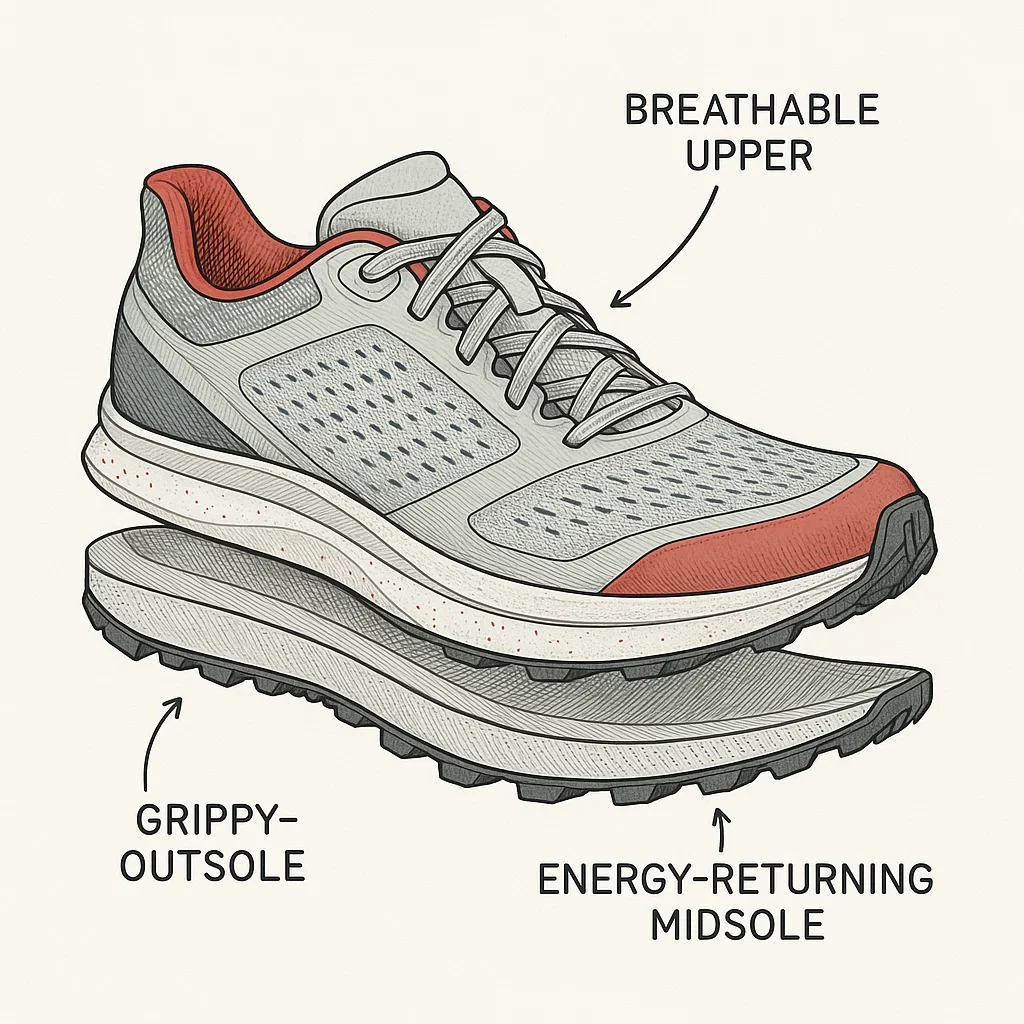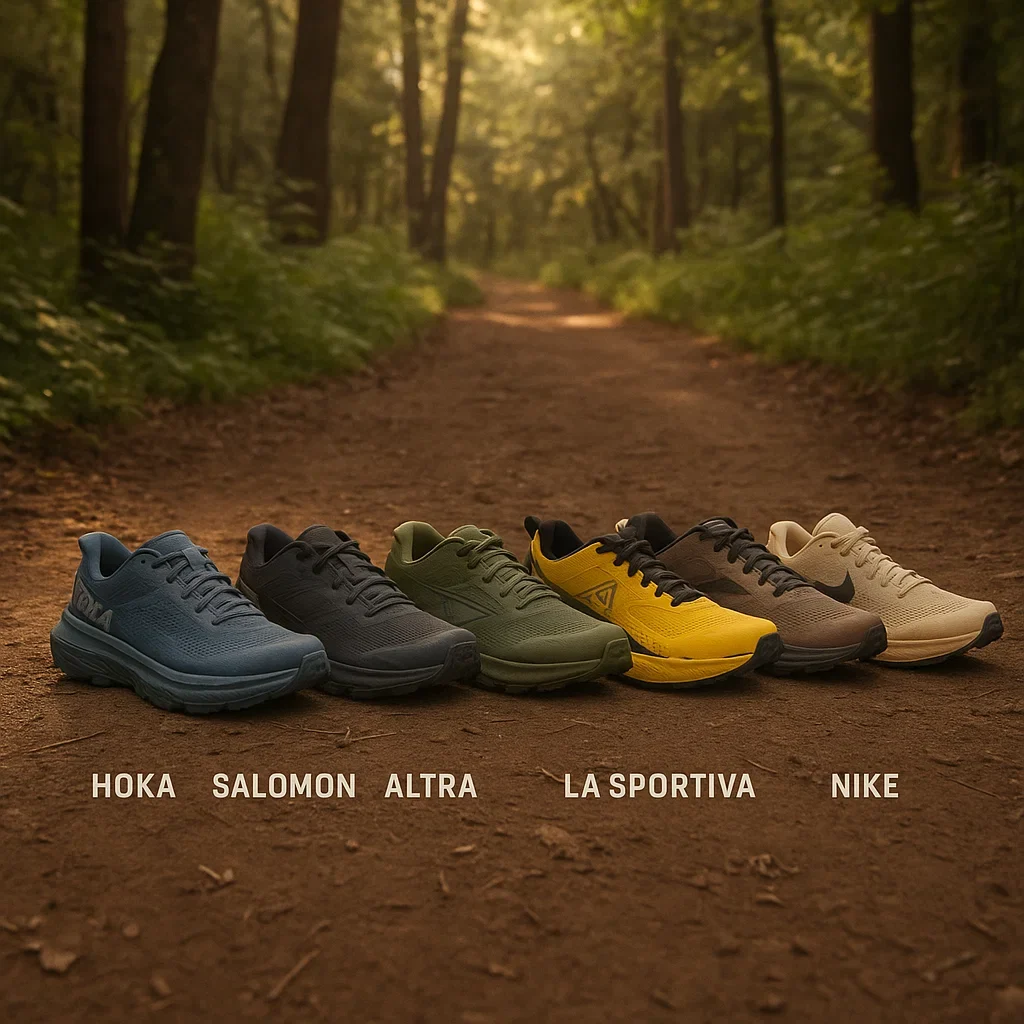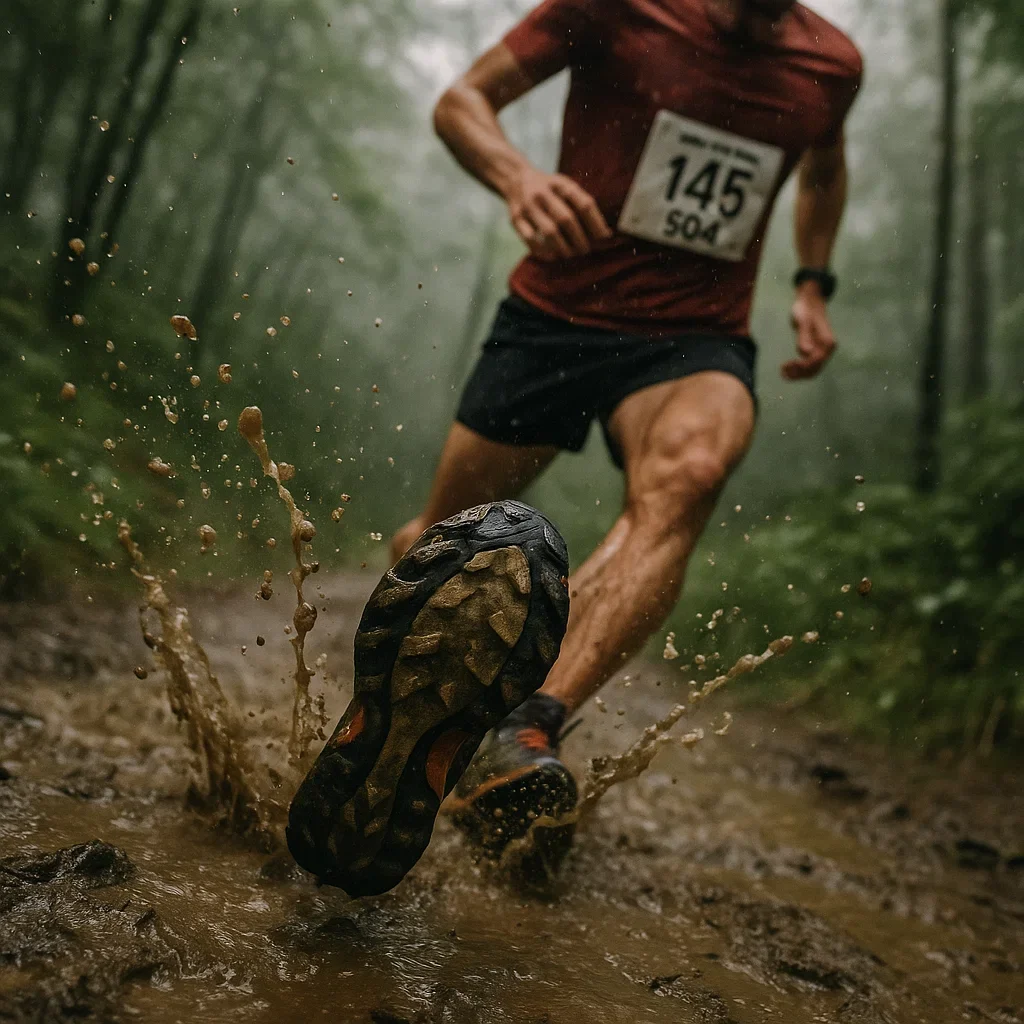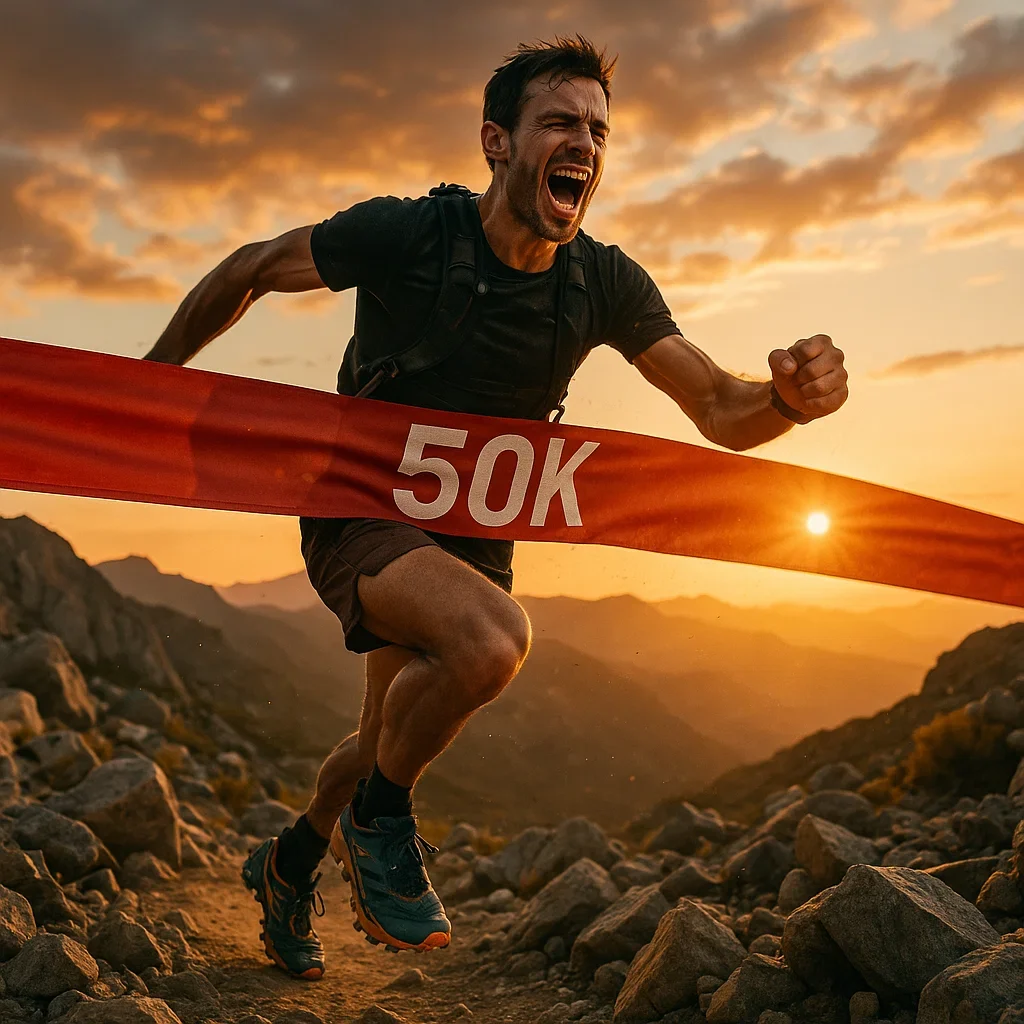Best Trail Running Shoes for 50K Ultra Marathons (2025 Guide)
Ready to conquer your first (or next) 50K? The 50K ultra marathon is a true test of endurance, grit, and preparation. But even the toughest runners know—your shoe choice can make or break your race. Hours on rugged trails, shifting surfaces, and relentless climbs demand a shoe that blends comfort, durability, and performance.
⛰️ What makes a 50K ultra marathon unique?
Unlike shorter trail races, a 50K ultra means hours on your feet—often over 5, 6, or even 8 hours of running, hiking, and problem-solving. The terrain varies, weather can change, and your feet will take a pounding. The right shoes help you finish strong, injury-free, and (maybe) smiling.
“I’ve seen runners with world-class engines drop out at 40K—not from lack of fitness, but from trashed feet and ruined shoes. Choose wisely!”
In this guide, you’ll discover the top trail shoes for 50K ultras, learn what features matter most, get expert-tested recommendations, and pick up race-day tips from experienced ultra runners. Let’s dive in!
🔎 What to Look for in Trail Shoes for 50K Ultra Marathons
- Cushioning: Long hours mean repeated impact. Choose shoes with ample, responsive cushion—too little and you’ll feel every rock, too much and you’ll lose stability.
- Durability: A 50K will expose weak points. Look for reinforced uppers, tough outsoles, and rock plates for technical ground.
- Grip: You’ll face everything from mud to scree—deep lugs and sticky rubber are essential for unpredictable conditions.
- Support & Stability: Rolling ankles or collapsing arches will end your race early. Prioritize a supportive heel, stable platform, and secure lacing.
- Weight: Lighter is better, but not at the cost of protection. Most great 50K shoes are in the 250–310g range.
- Fit & Comfort: Swollen feet and blisters are ultra killers. Go up half a size, and make sure the toebox has room to splay.
- Drainage & Breathability: Wet shoes = blisters. Choose models with mesh uppers and drainage ports for water crossings and sweat.
- Protection: Rock plates, reinforced toe bumpers, and durable overlays all matter for ultras—especially on technical courses.
🏆 Top Picks: Best Trail Shoes for 50K Ultra Marathons (2025)
After months of testing, reviews, and feedback from real ultra runners, here are the best shoes for 50K ultra marathons in 2025. Pick the pair that matches your style, terrain, and goals:
| Model | Weight (g) | Cushion | Grip | Best For | Price (USD) |
|---|---|---|---|---|---|
| Hoka Speedgoat 6 | 290 | High | ⭐⭐⭐⭐⭐ | Technical, rocky, long ultras | 155 |
| Salomon Ultra Glide 2 | 278 | Moderate-High | ⭐⭐⭐⭐ | Versatile, mixed terrain | 150 |
| Altra Olympus 6 | 325 | Max | ⭐⭐⭐⭐ | Wide feet, ultra cushioning | 180 |
| Brooks Cascadia 17 | 308 | Moderate | ⭐⭐⭐⭐ | Durability, protection | 140 |
| La Sportiva Jackal II | 300 | Moderate | ⭐⭐⭐⭐⭐ | Technical, mountain races | 170 |
| Topo Athletic Ultraventure 3 | 295 | High | ⭐⭐⭐⭐ | Comfort, wide toebox | 150 |
| Inov-8 Trailfly Ultra G 300 Max | 300 | Moderate-High | ⭐⭐⭐⭐⭐ | Long distance, ground feel | 170 |
Hoka Speedgoat 6
Pros: Legendary cushion, supreme grip, excellent for rocky/technical ultras.
Cons: Runs slightly narrow; may feel bulky to pure speedsters.
Best for: Mountain, technical, or mixed 50K events.
Salomon Ultra Glide 2
Pros: Lightweight feel, smooth rocker, versatile grip.
Cons: Not as cushioned as Speedgoat or Olympus.
Best for: Mixed terrain, rolling 50Ks, runners preferring lighter shoes.
Altra Olympus 6
Pros: Max cushion, roomy toebox, zero-drop design.
Cons: Heaviest on the list, some may find it unstable.
Best for: Runners with wide feet or those needing extra cushion.
Brooks Cascadia 17
Pros: Durable, protective, reliable classic.
Cons: Less energetic than lighter models.
Best for: Rugged terrain, those who value protection.
La Sportiva Jackal II
Pros: Secure fit, fantastic for technical climbs and descents.
Cons: Runs narrow, firmer ride.
Best for: Technical 50K mountain races, aggressive runners.
Topo Athletic Ultraventure 3
Pros: Natural ride, wide toebox, good cushion.
Cons: Less grip in deep mud.
Best for: Long comfort on non-technical or moderate trails.
Inov-8 Trailfly Ultra G 300 Max
Pros: Graphene grip, unique feel, durable.
Cons: Polarizing fit, some break-in needed.
Best for: Technical, muddy or varied 50K races.
Pick the shoe that fits your feet, matches your terrain, and gives you confidence from start to finish—comfort wins ultras!

⚖️ Lightweight vs. Cushioned Shoes for 50K: Which Wins?
The classic ultra debate: Do you want speed and agility, or plush comfort for the long haul? For 50K ultras, both have their place—here’s how to choose:
- Best for: Fast runners, non-technical courses, those chasing PRs
- Advantages: Quicker turnover, less fatigue, agile feel
- Downside: Less protection/cushion on rocky or very long courses
- Models: Salomon Ultra Glide 2, La Sportiva Jackal II
- Best for: Back-of-packers, technical/rocky or very hilly courses, comfort seekers
- Advantages: Plush landings, less soreness, better for foot swelling
- Downside: Slightly heavier, less ground feel
- Models: Hoka Speedgoat 6, Altra Olympus 6, Topo Ultraventure 3
🌍 How to Match Your Trail Shoes to 50K Race Terrain
Not all 50K races are created equal! The ground beneath your feet will shape your experience. Here’s how to pick the right shoe for common ultra terrains:
| Terrain | Key Features | Recommended Models |
|---|---|---|
| Rocky / Technical | Rock plate, sticky outsole, reinforced upper | Hoka Speedgoat 6, La Sportiva Jackal II |
| Muddy / Wet | Deep lugs, drainage mesh, secure fit | Inov-8 Trailfly Ultra G 300 Max, Brooks Cascadia 17 |
| Dry / Fast Rolling | Lightweight, moderate lugs, responsive midsole | Salomon Ultra Glide 2, Topo Ultraventure 3 |
| Mixed / Unknown | Versatile grip, balanced cushion, not too heavy | Brooks Cascadia 17, Salomon Ultra Glide 2 |
“My toughest 50K had 6 terrain changes. I was grateful for shoes that handled everything—grip and fit matter more than weight alone!”
🦶 The Importance of Fit and Sizing for Ultra Marathons
A great shoe with a poor fit will ruin your race. Here’s how to ensure your 50K trail shoes keep you moving mile after mile:
- Go Up Half a Size: Swelling is real—leave room for toe splay, descents, and foot expansion.
- Test With Race Socks: Bring your race-day socks to every shoe fitting.
- Lockdown Heel & Midfoot: Secure fit prevents blisters, black toenails, and wasted energy.
- Roomy Toebox: Especially important for wide or high-volume feet; consider brands like Altra and Topo.
- Pre-Race Break-In: Run at least 30–50 km in your race shoes, including at least one long run over 20 km.
- Check for Hot Spots: Any pain, pressure, or friction on a 10K training run will only get worse at 40K!
- No heel slip on climbs or descents
- Plenty of toe room after lacing tight
- No hot spots or pressure after 20 minutes of walking/running
- Shoe feels “invisible” when moving fast and slow
🧦 The Role of Insoles, Socks, and Other Gear in 50K Performance
Ultra comfort is more than just shoes! The right insoles, socks, and accessories can make your 50K feel (almost) easy:
- Insoles: Aftermarket insoles (like Superfeet, Currex, or custom orthotics) can add support, arch comfort, or extra cushion—test well before race day.
- Socks: Use technical, blister-resistant socks (merino blends or synthetics). Double-layer or toe socks help prevent hotspots.
- Gaiters: On sandy, dusty, or muddy courses, a good gaiter will keep debris out and save you from painful stops.
- Tape/Lube: Pre-tape known friction points (toes, heels) and use anti-chafe balm on feet and between toes.
- Laces: Swap to lock-laces or elastic laces for on-the-go adjustments.

🏃♂️ Training in Your 50K Race Shoes: Break-In & Confidence
Don’t let race day be the first time you truly test your shoes! Smart ultra runners use a systematic break-in process:
- Start Early: Log your first 20–30 km in shorter trail runs to check for hot spots or pressure points.
- Include Long Runs: At least one training run over 20–25 km at race pace in your race shoes is essential.
- Simulate Race Conditions: Use the same socks, insoles, and hydration pack you’ll race with—practice makes perfect!
- Make Adjustments: Relace, retape, or swap insoles if needed. Small tweaks can prevent big problems later.
- Monitor Wear: Watch for outsole or midsole compression. Shoes losing rebound before race day? Swap them!
⚠️ Common Mistakes When Choosing 50K Trail Shoes
- Too Tight or Too Small: Not sizing up for swelling—resulting in black toenails, blisters, and pain.
- Not Testing on Long Runs: Short test runs don’t reveal long-distance issues.
- Ignoring Terrain: Choosing shoes for dry races, then struggling in mud or rocks.
- Overemphasizing Weight: Going ultra-light at the expense of protection and comfort.
- Using Old or Dead Shoes: Starting a 50K in shoes that have lost their bounce—fatigue sets in early.
- Sticking to Familiar Brands Only: Sometimes your perfect fit is from a brand you’ve never tried before!
🌟 Expert Tips for Race Day
- Double Check Lacing: Use a runner’s knot or heel lock to prevent slip, especially on descents.
- Pre-Treat Blister Spots: Tape up known hot spots and apply anti-chafe balm before the race.
- Pack Dry Socks: Stash a pair in your drop bag or pack for mid-race changes, especially if the course is wet.
- Adjust On the Go: If you feel pain or tightness, stop and fix it. 1 minute now can save 30 minutes later!
- Visualize Trouble Spots: Know where the hardest terrain or descents are and plan shoe/gear accordingly.
- Check Weather & Terrain: Be ready to swap insoles, socks, or even shoes if weather turns.

❓ Frequently Asked Questions
🏁 What makes a 50K trail ultra different from shorter races?
👟 Should I buy a shoe just for my race, or use a high-mileage pair?
🦶 How do I prevent black toenails in a 50K?
🌧️ Waterproof or mesh for 50K?
📏 How much toe room do I need?
🧦 Best socks for ultra distances?
🏔️ Which shoes are best for mountainous courses?
🥇 How many shoes should I rotate in ultra training?
🚰 How can I keep my shoes dry mid-race?
🪨 Are rock plates necessary for all 50Ks?
🔄 How often should I replace trail shoes in ultra training?
💡 Can I run 50K in minimal shoes?
🧼 How do I clean shoes after a muddy 50K?
📉 What if my shoes feel flat before race day?
🛠️ Are custom insoles worth it for 50K?
👣 What can I do if my feet swell badly during ultras?
📋 How do I know if a shoe fits before race day?
🔗 Can I use road shoes for a 50K ultra?
🧑🔬 Are max-cushion shoes too much for 50K?
🔗 Further Reading & Resources
🌐 High-Quality External Resources
- iRunFar: Best Trail Running Shoes (Legendary field-tested reviews)
- OutdoorGearLab: Trail Shoe Guide (Lab-tested, technical comparisons)
- REI: How to Choose Trail Running Shoes (All levels, all terrains explained)
- RunRepeat: Top Trail Shoes (Data-driven shoe database and rankings)
📝 Quiz: Are You Ready for a 50K Shoe Challenge?
- What’s the #1 reason runners DNF 50K ultras (besides nutrition)?
- Which key features matter most for 50K ultra shoes?
- How do you know if your shoes are too small for race day?
- Name two mistakes runners make with 50K shoes.
- Which shoes are best for technical, rocky courses?
- Why should you “break in” your shoes before race day?
- What’s the ideal number of shoes to rotate in ultra training?
- What’s the main risk of using dead shoes in a 50K?
- True/False: Cotton socks are great for ultra distances.
- What’s a quick tip to prevent blisters on race day?
✅ Quiz Answers
- Foot problems: blisters, trashed feet, or bad shoe fit.
- Cushion, grip, durability, fit, support, weight.
- If your toes hit the end, no toe room when laced tight, or you get black toenails.
- Not sizing up, using old shoes, ignoring terrain, not breaking-in, only using one brand.
- Hoka Speedgoat, La Sportiva Jackal, Inov-8 Trailfly G 300 Max.
- To reveal any pressure, pain, or hot spots and avoid mid-race surprises.
- 2–3 (race pair, daily trainer, mud/hill specialist).
- Early fatigue, more injuries, and loss of rebound/cushion.
- False! Only technical, moisture-wicking socks.
- Tape known hot spots, use anti-chafe balm, and dry socks.
🚀 Share Your Score!
🌄 Final Thoughts: Your 50K Starts with the Right Shoes!
Every kilometer of a 50K ultra tests not just your body and mind, but also your gear. With the right pair of trail shoes, you can focus on your race—not your feet. Use our guide, test thoroughly, and choose shoes that empower you on every step of your ultra journey.
Dive deeper with our other shoe reviews, join the community, and share your finish line story!
Good luck, and see you on the trails!

🏃♂️ Choosing the Right Trail Shoes for Ultra Marathons
Ultra marathons, especially 50K races, can take place across a wide variety of terrains, from rugged mountain trails to soft, muddy paths. The right trail shoes can make all the difference. Let’s break down how to choose shoes based on race type and difficulty:
Choosing the Right Shoes Based on Race Type and Difficulty
There are several different types of 50K races, and each demands specific features in your trail shoes. Here’s a look at the ideal shoes for each race type:
- Best for rocky, steep, and technical terrains.
- Requires shoes with aggressive lugs, rock protection (rock plates), and high durability.
- Recommended Model: Hoka Speedgoat 6
- Perfect for soft, forested paths with occasional muddy conditions.
- Moderate tread depth and cushioning are optimal.
- Recommended Model: Salomon Ultra Glide 2
Rocky vs Soft Terrain: Trail Shoe Comparison
The type of terrain you will face is one of the most important factors when choosing your ultra marathon shoes. Here’s a comparison between shoes designed for rocky versus soft terrain:
| Terrain | Key Features | Recommended Models |
|---|---|---|
| Rocky / Technical | Rock plate, sticky outsole, reinforced upper for durability | Hoka Speedgoat 6, Salomon XA Pro 3D, La Sportiva Akasha |
| Muddy / Wet | Deep lugs, breathable mesh, and drainage capabilities | Inov-8 Trailfly Ultra G 300 Max, Brooks Cascadia 17 |
| Dry / Fast Rolling | Lightweight, moderate tread depth, responsive midsole | Salomon Ultra Glide 2, Topo Ultraventure 3 |
| Mixed / Unknown | Versatile grip, balanced cushion, lightweight feel | Brooks Cascadia 17, Salomon Ultra Glide 2 |
“My toughest 50K had 6 terrain changes. I was grateful for shoes that handled everything—grip and fit matter more than weight alone!”
Real Race Experiences: What Ultra Runners Say About Their Shoe Choices
Hear from ultra marathoners about their personal experiences with shoes during 50K races. Here are some valuable tips and insights:
“In my 50K ultra, the course had rocky and steep sections. I wore Hoka Speedgoat 5, and they did an amazing job providing **superior grip on rocks** and supporting my feet with **excellent cushioning**. It helped me stay fast on technical sections.”
“During my desert ultra marathon, the conditions were incredibly hot. The **Altra Olympus 5** worked wonders, providing tons of **room in the toe box** and great **extra cushioning**. However, I did feel the shoe’s weight towards the end.”
“In my forest-based 50K, there were muddy and rocky paths. The **Salomon Ultra Glide 2** felt perfect. The **excellent traction** and **breathability** allowed me to push through without overheating, which was critical for my performance.”
🧼 Post-Race Shoe Care and Maintenance: How to Extend the Life of Your Trail Shoes
After running a 50K or any ultra marathon, your shoes go through a lot—mud, water, sweat, and rugged terrains. Proper care and maintenance can help extend the life of your trail shoes and keep them performing at their best for future races. Here’s how to take care of your shoes after the race:
Proper Storage for Future Use
After a long race, your shoes may be tired, muddy, or sweaty. Storing them properly is the key to ensuring they stay fresh and ready for future use:
- Clean Immediately: After your race, clean your shoes as soon as possible. Rinse off mud and debris with cool water, and allow them to air dry naturally. Never use a dryer or direct heat, as this can warp the shoe materials.
- Remove Insoles and Laces: Always remove the insoles and laces from your shoes after a race. This helps them dry out completely and prevents any lingering odor or moisture buildup.
- Stuff With Paper: Stuff your shoes with crumpled newspaper or paper towels to help absorb moisture and maintain their shape while they dry. Avoid leaving them in direct sunlight to prevent any damage to the materials.
- Store in a Cool, Dry Place: Always store your shoes in a cool, dry place away from direct sunlight, heat, or humidity. A closet with good airflow is ideal to keep your shoes in top condition.
Maintenance Tips to Extend Shoe Life
To make sure your shoes continue to perform well in future races, regular maintenance is important:
- Check for Wear and Tear: Inspect the soles for any wear, especially on the tread. If you notice significant wear or thinning of the rubber, it’s time to replace the shoes before your next race.
- Re-lace Your Shoes: Over time, laces can fray or lose their elasticity. Consider replacing your laces if they show signs of wear. Lock-laces or elastic laces are a great upgrade for easier and more secure fit adjustments during races.
- Reseal Water-Resistant Shoes: If your shoes are water-resistant, apply a water-repellent spray to maintain their waterproof abilities. Make sure to follow the manufacturer’s instructions and apply the spray after cleaning the shoes.
- Keep the Interior Fresh: To prevent bad odors and mold buildup, air out your shoes thoroughly after each use. You can also use activated charcoal bags or shoe-specific deodorizer inserts to keep the interior fresh.
When to Replace Your Trail Shoes
Even with the best care, trail shoes do wear out over time, especially after running long ultra distances. Here’s how to know when it’s time to replace your shoes:
- Compression of Cushioning: If you feel like the cushioning has flattened or lost its bounce, it’s time for a new pair. The midsole is typically the first part of the shoe to lose its performance after many miles.
- Loss of Traction: If the lugs on the outsole are worn down or the shoe no longer provides the same grip on muddy or rocky surfaces, you should replace them.
- Visible Damage: Check for any visible signs of damage such as torn uppers, split seams, or significant holes in the sole. These could lead to blisters and discomfort during your next race.
“Remember, your shoes are your foundation in ultra races. Taking good care of them ensures they’ll take good care of you!”
🎥 Watch: Best Trail Shoes for 50K Ultra Marathons
1. Hoka Mafate X Review: I Tried the Brand New Trail Running Shoe
Hoka Mafate X is tested over a 50-mile ultra marathon—explore how this model performs in terms of cushioning, grip, and durability.
2. Best TRAIL RUNNING SHOES of 2024 | My TOP 3 favourites
Top 3 trail running shoes for 2024, focusing on ultra race conditions. The video compares performance, durability, and comfort for long-distance trail runners.
3. Nike’s Carbon Trail Shoe Tested Over Ultra Distance
Nike’s carbon-plated trail shoe tested during an ultra marathon to see how it fares over long-distance terrain with mixed surfaces.
4. INOV8 TRAILTALON | One Shoe to RULE Them All!? Review
INOV8 TrailTalon is tested in ultra marathon conditions, evaluating its durability, comfort, and how it handles tough, rocky trails.
5. Best Trail Racing Shoes [SEPT 2024]
A roundup of the best trail racing shoes for ultra marathoners in 2024, covering shoes that perform best on different trail surfaces.

About the Author
Lost Pace is an ultramarathon runner, shoe-tester and the founder of umit.net. Based year-round in Türkiye’s rugged Kaçkar Mountains, he has logged 10,000 + km of technical trail running and completed multiple 50 K–100 K ultras.
Blending mountain grit with data, Lost analyses power (CP 300 W), HRV and nutrition to craft evidence-backed training plans. He has co-written 260 + long-form guides on footwear science, recovery and endurance nutrition, and is a regular beta-tester of AI-driven coaching tools.
When he isn’t chasing PRs or testing midsoles, you’ll find him sharing peer-reviewed research in plain English to help runners train smarter, stay healthier and finish stronger.
Ultrarunner · Data geek · Vegan athlete

